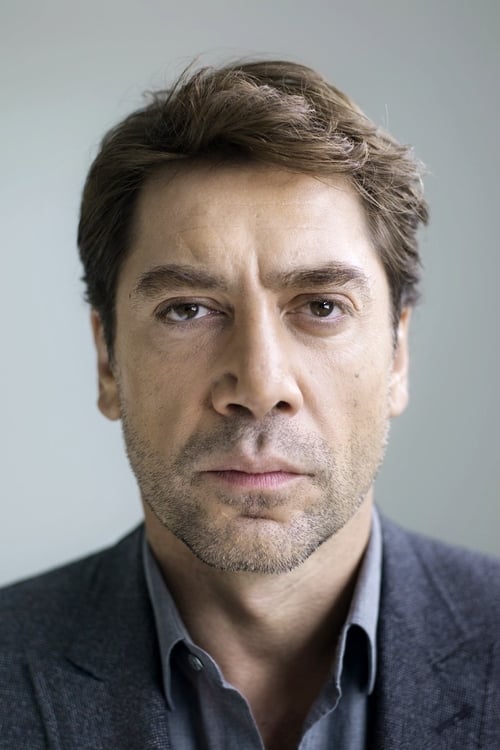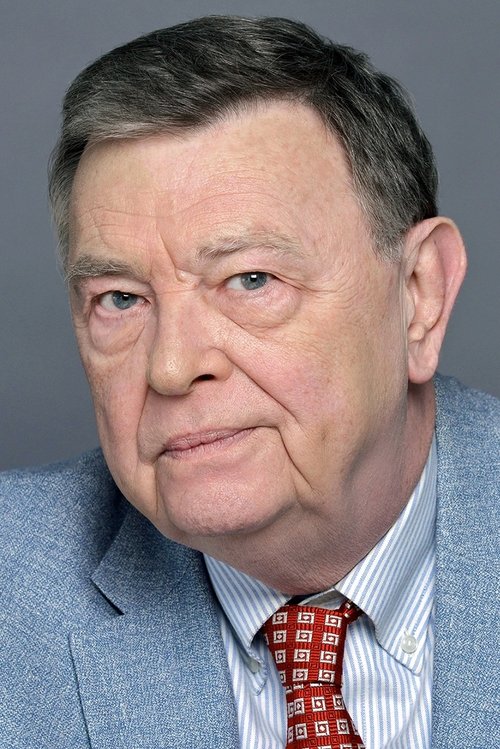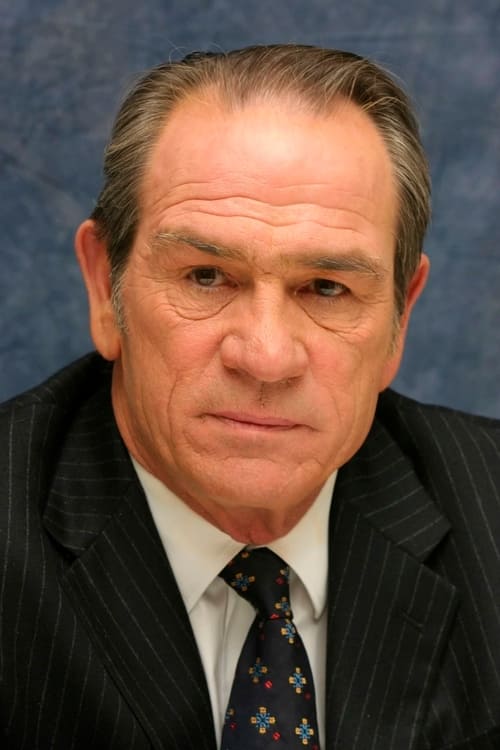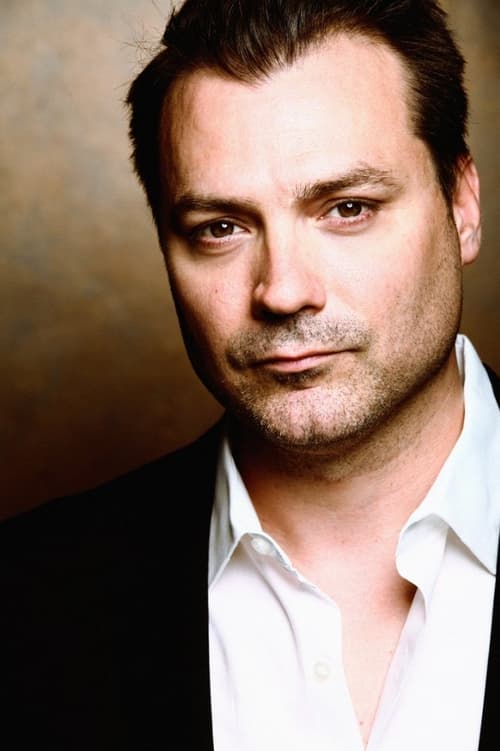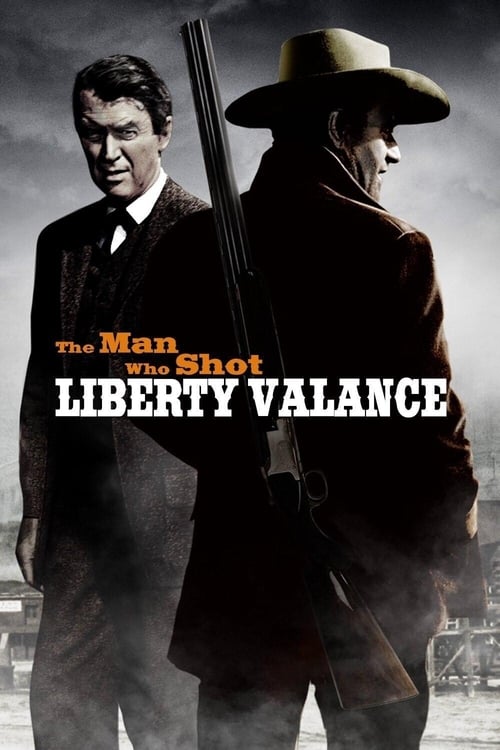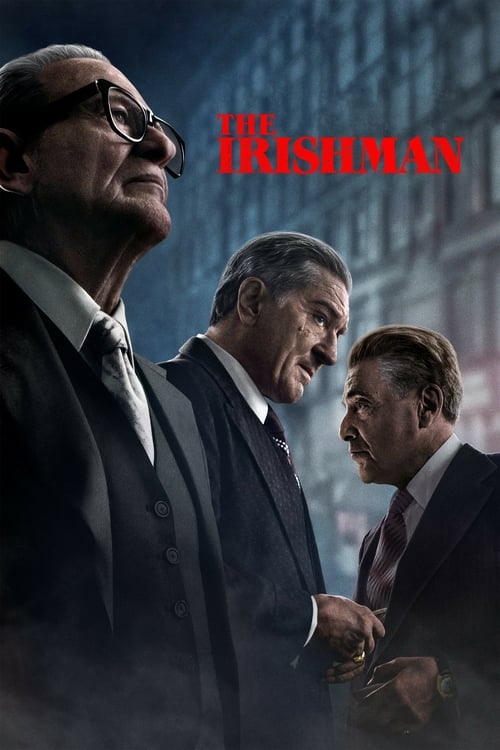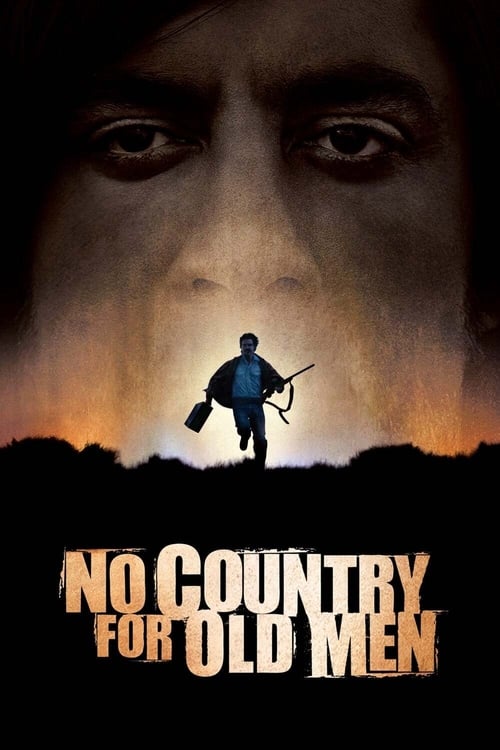
No Country for Old Men
Llewelyn Moss stumbles upon dead bodies, $2 million and a hoard of heroin in a Texas desert, but methodical killer Anton Chigurh comes looking for it, with local sheriff Ed Tom Bell hot on his trail. The roles of prey and predator blur as the violent pursuit of money and justice collide.
Dialogues from Movie No Country for Old Men
Quotes from Movie No Country for Old Men
Memorable Scenes from Movie No Country for Old Men
The Coin Toss
In a small, dingy gas station, Llewellyn Moss encounters Anton Chigurh, a relentless hitman. As they speak, Chigurh pulls out a coin and offers the gas station owner a choice: to call it. This moment of fate captures the weight of choice and chance. The silence and tension rise as we realize this symbolizes the larger themes of life and death within the film. After the coin toss, the owner calls it incorrectly, and Chigurh’s cold demeanor and decision to kill him for his mistake intensifies the stakes. This chilling encounter sets the tone for the unpredictable violence that follows.
Context: This scene highlights Chigurh’s philosophy about fate and randomness, as well as the grim reality of the world surrounding the characters.
Moss Takes the Money
Llewellyn Moss stumbles upon a drug deal gone wrong in the desert. He finds a suitcase full of cash and makes the impulsive decision to take it, setting off a chain of events that lead to his and others’ doom. The moment is laced with tension, emphasizing both greed and survival instincts. After taking the money, he quickly realizes he has put himself in grave danger as he becomes the target of Chigurh. This choice alters the trajectory of the story and showcases Moss's struggle between morality and survival.
Context: Moss's decision illustrates the theme of choice, emphasizing how one decision can irrevocably change a person's life.
Chigurh’s First Kill
Chigurh arrives at Moss's home to retrieve the money, brutally killing Moss’s friend in the process. The nonchalant manner in which he executes the murder is chilling and serves to highlight the nature of the antagonist. This moment is a turning point, sharply elevating the tension and fear surrounding Chigurh, emphasizing his cold, calculating nature. The aftermath leaves Moss feeling the looming threat of his own mortality and illuminating Chigurh's indiscriminate violence.
Context: This scene reaffirms Chigurh's role as a force of nature, unbound by morality, further emphasizing the themes of fate and inevitability.
The Motel Shootout
In a tense and explosive confrontation at a motel, Moss faces off against Chigurh and his accomplices. Fast-paced shots and quick editing create a feeling of chaos. The pivotal moment comes when Moss, realizing he’s cornered, grabs a gun in a blaze of action. The manic energy underscores the desperation of his situation and the brutal reality of violence in pursuit of the money. In the aftermath, Moss escapes but is left with the knowledge that he can never truly be safe, raising questions about loyalty and survival.
Context: This scene is critical as it encapsulates the violence inherent in Moss's choices while showcasing Chigurh’s relentless pursuit.
The Sheriff’s Reflection
Sheriff Bell has a quiet moment with his wife, revealing his struggles with the increasing violence and chaos in the world. He reflects on his inability to understand the brutality he witnesses, expressing a deep sense of melancholy. This contemplation is poignant, as it humanizes him and provides insight into his character’s emotional burdens. The aftermath reverberates through the film, illustrating an older generation grappling with the changes in society.
Context: This moment connects to the broader theme of the moral decline within society and the feeling of helplessness in the face of evil.
The Final Face-off at the Bridge
In an intense showdown, Moss finally confronts Chigurh at a bridge. The silence is broken by gunfire, a stunning visual representation of their escalating conflict. In a shocking twist, Chigurh kills Moss, a moment filled with emotional weight. The aftermath highlights the senseless nature of violence; Moss's quest comes to a tragic end, demonstrating that fate can be cruel. This key scene underscores the film's exploration of chance versus fate.
Context: This scene illustrates the ultimate consequence of choices made by both characters, encapsulating the film's tension and philosophical inquiries.
Bell’s Dream
Sheriff Bell shares a dream about his father, expressing feelings of nostalgia and loss. The dream reveals Bell’s internal struggle with progress and change, as he feels disconnected from the present violent world. The weight of his emotions becomes palpable, as he carries the idealism of the past with him. This introspective moment brings to the forefront the generational gap and the theme of the loss of morality over time.
Context: This poignant reflection serves to enrich Bell’s character and illustrates the film's exploration of time, loss, and change.
The Hit-and-Run
In a shocking turn of events, Chigurh retaliates against a man who has been helping Moss by hitting him with a car and subsequently seeking out more victims. The visceral nature of this moment encapsulates Chigurh's ruthless efficiency, leaving viewers breathless. This scene cements his role as an unstoppable force within the narrative, leaving a path of destruction in his wake. The aftermath deepens the horror of Chigurh’s character, marking him as nearly invincible.
Context: This scene heightens the film's tension as it reinforces the theme of indiscriminate violence and the collateral damage of greed.
Chigurh’s Final Confrontation
In a nail-biting final scene at the end, Chigurh faces a defeated Marshal. The film’s atmosphere is thick with foreboding as Chigurh remains relentless, showcasing his uncompromising nature. This final look at true evil is haunting and resonates long after viewing, leaving viewers questioning morality and justice. The aftermath, as Chigurh walks away, reinforces that evil can walk away scot-free, a chilling conclusion.
Context: This scene leaves viewers with an unsettling sense of closure, reinforcing the prevailing themes of fate and the nature of evil.
Bell’s Disappointment
Sheriff Bell visits the site of a violent crime, searching for answers. His somber demeanor encapsulates a deep-rooted disappointment in society and his own limitations. This moment resonates as he voices his confusion about the brutal world he inhabits. Bell’s struggle reflects the futility against the backdrop of rampant chaos. The aftermath of this scene emphasizes the feelings of hopelessness and nostalgia for a simpler time.
Context: Bell's journey throughout the film exemplifies the theme of age versus youth and the struggle to understand the changing world.
The Failed Drug Deal
The film opens with a stark depiction of a failed drug deal leading to violence. The chaos and brutal honesty of this encounter serve to set the stage for the ensuing events. As men are brutally slaughtered, we witness the grim reality that sets the tone for the entire film. The aftermath showcases the dangers of greed and criminality, drawing viewers into a world where chaos reigns and life is devalued.
Context: This opening scene brilliantly lays the groundwork for the themes of violence and moral ambiguity that will echo throughout the film.
The Hideout
Moss is hiding from Chigurh, reflecting on his decisions. In a quiet, tense moment, he knows he’s being hunted. The visual storytelling effectively captures Moss’s inner turmoil and fear. This pivotal moment connects to the themes of survival and the inevitability of fate that haunt him. The aftermath of this scene emphasizes the growing tension and the inescapable threat Chigurh poses.
Context: It encapsulates the dread of constantly being hunted and the psychological toll that violence takes on individuals.
The Blood Trail
Chigurh follows a blood trail from a scene of violence, demonstrating his relentless pursuit. This tracking sequences highlights his proficiency as a killer, showcasing his near-mythical status. The stark visuals of the blood contrast with the desolate landscape, emphasizing the brutality of his actions. The aftermath accentuates the film's themes of inevitability and the consequences of choices made in desperation.
Context: This scene enhances Chigurh’s character, illustrating his unyielding nature and the inevitable destruction left in his path.
The Final Decision
As Bell processes the aftermath of the violence around him, he contemplates his role in a changing world. He voices feelings of helplessness and loss, deepening his character's emotional weight. The scene resonates deeply, leaving viewers questioning their own morality and choices. The aftermath of this reflection underscores the broader themes of regret and the passage of time.
Context: Bell's contemplations embody the film’s exploration of morality and the confusion of understanding a world that feels unrecognizable.
The Reckoning
In a quiet moment of reflection, Bell speaks openly about the cycle of violence and feels a sense of resignation. This speech resonates with the audience as it highlights the despair felt by those witnessing the increase of violence around them. The emotional weight of this confession emphasizes the theme of inevitability within the film. The aftermath showcases Bell’s evolution and deepens the emotional resonance of his character’s journey.
Context: This scene encapsulates the existential themes of the film, magnifying Bell's struggle to find meaning in an unforgiving world.
The Moment of Terror
Chigurh visits the house where Moss is hiding, creating an atmosphere filled with dread. As the camera focuses on the tension, the quiet moments amplify the impending chaos. The pivotal stance he takes before confronting Moss underscores his monstrous nature. The aftermath leaves viewers gripping their seats, fully aware of the fate awaiting Moss. This moment encapsulates the essence of fear and unpredictability that permeates the narrative.
Context: It demonstrates the existential terror that Chigurh represents and the fragility of life in the face of indifference.
The Taco Stand
In a chilling encounter, Chigurh arrives at a taco stand and once again exhibits his ruthlessness. The tension mounts as he confronts another victim, showcasing his unwavering commitment to his mission. This moment emphasizes the arbitrary nature of Chigurh's violence and reinforces the unpredictability of fate. The aftermath leaves the audience unsettled, a poignant reminder of how swiftly life can change.
Context: This scene illustrates the brutal randomness of violence and further solidifies Chigurh's role as an embodiment of chaos and fate.
Bell's Reflection on the Past
Sheriff Bell's soft-spoken musings about past crimes evoke a nostalgic longing for a different era. As he recalls simpler times filled with goodness, viewers sense the profound weight of loss. This internal conflict showcases Bell’s realization of his inability to comprehend the growing darkness around him. The aftermath highlights the generational divide, enforcing the film’s themes of morality and the inevitable change of society.
Context: Bell's reflections create a backdrop for understanding character motivations and the aging struggle to reconcile the past with the present.
Chigurh's Final Words
In a surprising confrontation with a witness, Chigurh shares a moment of chilling calm before delivering his final words. This dialogue encapsulates the movie's sense of inevitability and fate. The tension of his presence creates a sense of dread that resonates long after the scene concludes. The aftermath leaves viewers questioning the nature of morality and choice, amplifying the thematic depth of the film.
Context: This final interaction reinforces the abstract philosophical themes running throughout the movie, accentuating Chigurh's terrifying worldview.
The Loss of Innocence
In his search for answers, Sheriff Bell encounters a young couple who’ve also fallen victim to the violence surrounding them. This moment is heart-wrenching, capturing the tragic losses incurred by the wider conflict. The emotional weight of the scene reflects on the innocence lost and the faceless victims of crime. The aftermath serves to emphasize the senseless nature of violence and deepens the story’s emotional resonance.
Context: This scene highlights the tragic cost of criminality, reinforcing the film’s themes of despair and the ramifications of choices made.
The Unforgiving Landscape
Wide shots of the harsh Texas landscape throughout the film serve as a backdrop for the chaotic events. The starkness of the desert mirrors the moral ambiguity faced by the characters, deepening the emotional weight of the story. As the tension rises, the landscape becomes a character itself, symbolizing the isolation and desolation felt by those ensnared in violence. The aftermath enhances the film's thematic undertones of survival and the harsh realities of life.
Context: The environment emphasizes the narrative’s emotional landscape, showcasing the characters' struggles against not only each other but also the unforgiving nature surrounding them.
The Final Goodbyes
In the closing moments, Bell reflects on his past and his family's legacy, expressing a sense of resignation. His poignant words encapsulate the weight of regret and a desire for understanding in an increasingly complex world. This moment leaves an emotional imprint, conveying the profound themes of time, loss, and humanity. The aftermath of this farewell resonates with viewers, lingering in their minds as they contemplate their perceptions of good and evil.
Context: The final goodbyes solidify Bell's position as a moral compass, emphasizing one man’s grappling with change and the ideals of a bygone era.
Download App
Behind the Scenes from Movie No Country for Old Men
Javier Bardem's Coin Flip Scene
During the infamous coin flip scene, Javier Bardem performed the moment in one take, showcasing his dedication to capturing the character's chilling nature.
Why it matters: This not only highlights Bardem's commitment to the role but also helps solidify Anton Chigurh as one of cinema's most memorable villains with a scene that exemplifies his lack of humanity.
Cinematography Techniques
Roger Deakins used a unique combination of natural light and stealthy camera movements to create tension throughout the film.
Why it matters: This immersive technique adds to the gritty realism and heightens the suspense, making audiences feel as though they are part of the film's bleak landscape.
Josh Brolin's Addition to the Cast
Josh Brolin was initially not the first choice for the role of Llewellyn Moss; this position was to be filled by another actor until scheduling conflicts arose.
Why it matters: Brolin's portrayal, instead, gave the character a relatable desperation that resonates deeply with audiences, making the character's moral dilemmas more impactful.
A Minimalist Approach
The Coen Brothers intentionally used sparse dialogue and sound design throughout the film.
Why it matters: This approach amplifies the tension in key scenes and emphasizes moments of silence, allowing viewers to fully absorb the emotional weight each character bears.
Chemistry Among Cast
The interactions between Bardem, Brolin, and Tommy Lee Jones were crafted through careful direction to capture their characters' disparate moral views.
Why it matters: The layered dynamic underscores the film’s central theme of the changing nature of morality in an increasingly chaotic world.
Real Weapons Used
The film's production team opted for real guns, with a focus on safety protocols during the action sequences.
Why it matters: This choice added a level of authenticity to the violence in the film, enhancing the stark reality it portrays about brutality and moral ambiguity.
The Iconic Score (or Lack Thereof)
Composer Carter Burwell created an eerily minimal score that was often left out, deliberately allowing ambient sound to fill the silence.
Why it matters: This decision reinforces the loneliness of the film’s settings and the isolation felt by its characters, making climactic scenes more impactful.
The Cattle Gun
Bardem's use of a cattle gun for murders was based on the real practices in some illegal drug trade operations.
Why it matters: This chilling authenticity adds to the film's unsettling vibe by reflecting real-world violence, rather than depicting it for entertainment.
Filming Locations
Filmed primarily in West Texas, the Coen Brothers selected locations that authentically represented the stark, desolate settings described in Cormac McCarthy’s novel.
Why it matters: The landscapes serve as a character in their own right, mirroring the themes of isolation and the moral battle faced by the characters.
Tommy Lee Jones' Monologues
Jones's character, Sheriff Bell, delivers monologues that were deeply influenced by McCarthy's novel, adding layers to his moral perspective.
Why it matters: These monologues establish a philosophical grounding for the film, inviting the audience to ponder the nature of good and evil.
Safety First on Set
Before filming with the cattle gun, extensive training and safety meetings were held to ensure the actors and crew were safe during intense scenes.
Why it matters: This attention to safety not only reflects the crew’s professionalism but also allowed actors to perform more confidently during high-stakes scenes.
Missing Ending
The film's ambiguous ending, which some viewers found jarring, was preserved exactly as it was in McCarthy's novel, reflecting the author’s vision.
Why it matters: This choice sparked significant discussion among viewers, ensuring that its themes of inevitability and morality linger beyond the final credits.
No Musical Cues for Key Moments
Rather than relying on music to cue emotional responses, the Coen Brothers often left silence in crucial moments.
Why it matters: This enhances viewer engagement, prompting deeper reflection on the characters' choices without the influence of a musical score.
Utilizing Real Locations
The Coen Brothers filmed in regions that were not only visually appealing but also reflective of the story’s bleak atmosphere.
Why it matters: These authentic backdrops amplify the film's sense of realism and allow the audience to connect more deeply with the characters.
Bardem's Haircut
Javier Bardem's distinctive bowl haircut was a choice made to enhance Chigurh's unsettling presence.
Why it matters: This visual element contributes to the character's iconic look and adds to his portrayal as an unnatural force throughout the narrative.
Tommy Lee Jones' Inspiration
Jones drew from personal experiences and stories he heard growing up in Texas to inform his portrayal of Sheriff Bell.
Why it matters: This gave depth to Bell's character, making his struggle with changing times more relatable to audiences familiar with such shifts in society.
Filming Order
The film was shot in the order of the script, which is uncommon in filmmaking but was utilized here to facilitate real-time character development.
Why it matters: This allowed actors to evolve naturally with their characters throughout the filming process, enhancing the authenticity of their performances.
The Role of Violence
The Coen Brothers intentionally depicted violence in a stark and unembellished manner, avoiding glamorization.
Why it matters: This creative choice fosters a more profound audience reflection on the consequences of violence, paralleling the moral decay of society depicted in the film.
Collaborative Lighting
Deakins and the cinematography team worked closely to develop lighting that emphasized the desolation of Texas.
Why it matters: The resulting moody lighting not only enriches the film's visuals but also enhances the storytelling, portraying loneliness and existential dread.
Minimal Use of CGI
The Coen Brothers opted for practical effects over CGI for action sequences, enhancing realism.
Why it matters: This decision makes the violence more visceral and engaging, drawing audiences further into the immersive world of the film.
Character Complexity
Each character in the film embodies a specific viewpoint on morality, illustrating the nuanced battle between good and evil.
Why it matters: This intricate characterization invites viewers to reflect on their own beliefs about morality versus survival in a harsh world.
The Color Palette
The film's color palette was deliberately muted, with browns and greys reflecting the desolation of the landscape.
Why it matters: This visual choice enhances the film's themes of despair and moral ambiguity, immersing viewers in the characters' bleak realities.
Download App


